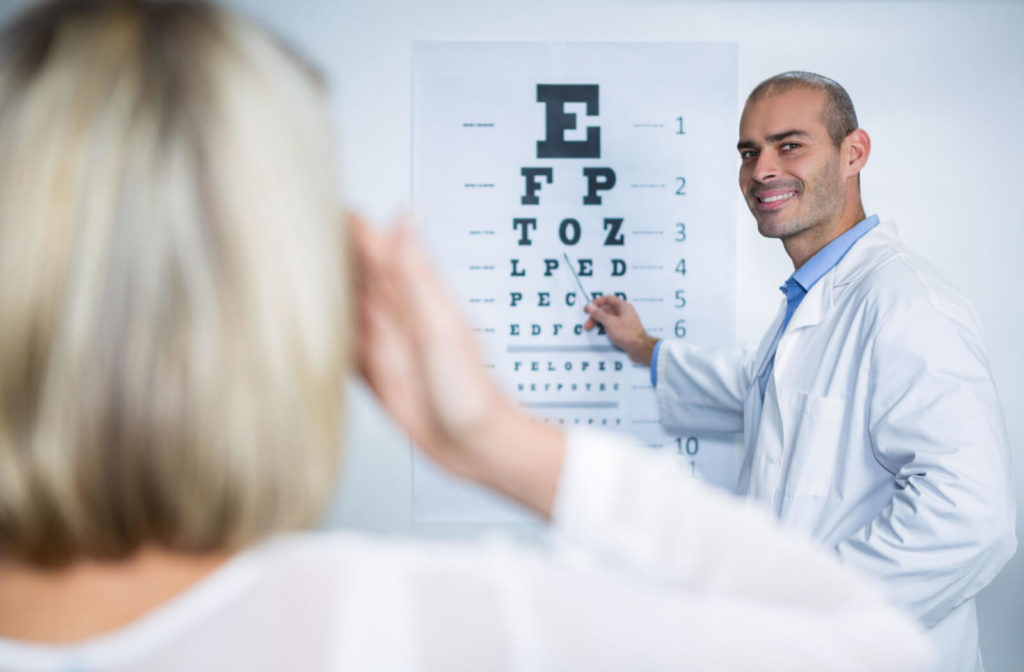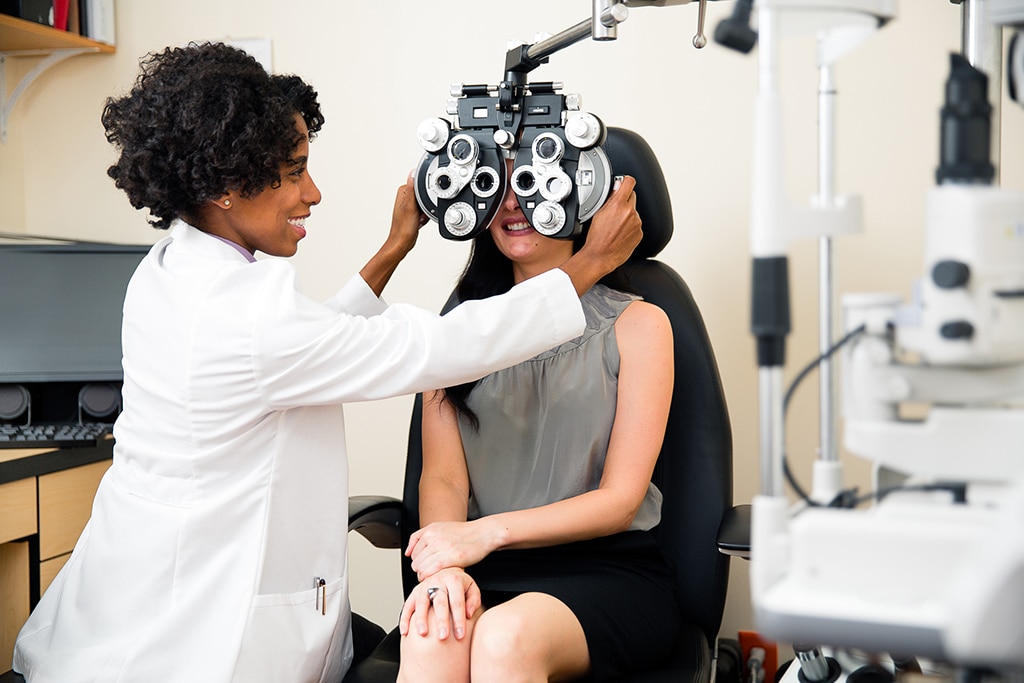Why Selecting an Eye Doctor Optometrist is Vital for Your Eyes
Why Selecting an Eye Doctor Optometrist is Vital for Your Eyes
Blog Article
Checking Out the most recent Technical Developments in Optometry and What They Mean for Eye Doctors
In the ever-evolving area of optometry, recent technical improvements are reshaping just how experts approach eye treatment. From the precision of Optical Comprehensibility Tomography to the nuanced understandings provided by AI-driven analysis devices, these advancements are setting brand-new criteria in individual assessment and therapy. Teleoptometry is poised to redefine accessibility, ensuring that competence goes beyond geographical limitations. As these innovations permeate the practice, optometrists are confronted with the challenge of accepting these tools to boost client outcomes. Yet, the concern remains: exactly how will these technical shifts redefine the functions and duties within the career?
Technologies in Diagnostic Tools
Advancing the area of optometry, innovations in diagnostic devices have actually transformed the method eye treatment specialists analyze and diagnose ocular conditions and visual disabilities. The past decade has experienced substantial technological developments, enabling even more precise and detailed assessments. Optical Comprehensibility Tomography (OCT), for instance, gives high-resolution cross-sectional pictures of the retina, permitting the early detection of illness such as glaucoma and age-related macular deterioration. This non-invasive imaging strategy has come to be indispensable in contemporary optometric practice.
One more trick advancement is the introduction of innovative corneal topography systems, which map the surface curvature of the cornea with accuracy. These devices are especially advantageous for suitable contact lenses and detecting corneal conditions. Furthermore, electronic retinal imaging has changed typical ophthalmoscopy, supplying in-depth, breathtaking sights of the retina that assist in comprehensive aesthetic exams.
The growth of wavefront aberrometry has actually likewise been critical, enabling the analysis of refractive errors with unequaled accuracy (Optometrist Chino). This technology helps in personalizing rehabilitative lenses and boosting medical outcomes for refractive surgeries. Collectively, these diagnostic improvements encourage eye doctors to supply remarkable patient care, making certain early intervention and customized therapy approaches, inevitably boosting aesthetic wellness results
AI in Individual Administration
Structure on the foundation of cutting-edge analysis devices, the consolidation of synthetic knowledge (AI) in individual administration represents a transformative jump for optometry. AI systems are progressively used to boost effectiveness, precision, and personalization in patient treatment.
Furthermore, AI-driven platforms promote streamlined person interactions and management processes. Automated scheduling, online assessments, and personalized follow-up strategies not only enhance patient satisfaction yet also enhance time management for practitioners. These systems can triage individuals based on the necessity of their problems, making certain that those in important need get punctual attention.
Moreover, AI improves decision-making by supplying optometrists with evidence-based suggestions and therapy paths. By incorporating information from digital health documents, AI devices supply insights that inform professional decisions, decreasing the danger of mistakes and enhancing patient results. As AI remains to advance, its function in individual monitoring will likely broaden, improving the landscape of optometric treatment.
Breakthroughs in Retinal Imaging
In the realm of optometry, retinal imaging has actually witnessed amazing technical innovations that are improving diagnostic capabilities and client care. Developments such as Optical Coherence Tomography (OCT) and fundus photography have actually changed just how eye doctors examine the retina and visualize. OCT, specifically, supplies high-resolution, cross-sectional pictures of the retina, enabling go to this site the comprehensive evaluation of its layers. This capacity is vital for very early discovery and administration of conditions like glaucoma, diabetic person retinopathy, and age-related macular degeneration.
Boosted imaging modalities like OCT angiography are more refining analysis precision. This non-invasive strategy maps blood flow in the retina, supplying vital understandings right into vascular health and wellness without the need for color shots. Furthermore, flexible optics modern technology is being integrated into retinal imaging systems to remedy eye aberrations, providing unprecedented photo clarity. Such improvements help with the recognition of minute retinal adjustments that might indicate illness development.
In addition, innovations in artificial intelligence are enhancing retinal imaging by allowing computerized evaluation of huge datasets. These systems assist eye doctors in recognizing patterns indicative of pathology, thereby enhancing diagnostic accuracy and effectiveness. Jointly, these innovations are transforming retinal imaging into a foundation of modern-day eye treatment, improving outcomes and expanding restorative opportunities.
Teleoptometry's Expanding Duty
Teleoptometry is increasingly ending up being an essential element of eye treatment, driven by innovations in data and analysis devices. As optometry accepts digital makeover, teleoptometry promotes remote assessments, allowing optometrists to prolong their solutions past traditional limits. This is particularly useful in country and underserved areas where accessibility to specialized eye care is often minimal. By leveraging high-resolution video clip conferencing and progressed retinal imaging, optometrists can carry out extensive eye exams from afar, guaranteeing timely medical diagnosis and therapy.
The combination of synthetic intelligence (AI) more improves teleoptometry, enabling the evaluation of visual data and assisting in the detection of ocular problems such as glaucoma and diabetic retinopathy. AI-powered formulas can rapidly analyze complicated imaging data, giving optometrists with valuable understandings that reinforce clinical decision-making.
In addition, teleoptometry supports continuity of care via seamless combination with electronic health records (EHRs), permitting optometrists to keep extensive client backgrounds. This guarantees that people get regular and individualized treatment even when seeking advice from various practitioners.
Regardless of these advantages, difficulties continue to be, consisting of ensuring information security and handling individual expectations. However, teleoptometry stands for a significant stride towards more obtainable, efficient, and patient-centered eye care. As innovation progresses, its duty is positioned to increase better.

Future Patterns in Eye Care
A myriad of cutting-edge fads is readied to reshape the future of eye care, driven by technological advancements and the developing needs of have a peek at this site patients. One significant trend is the combination of expert system (AI) in diagnostics, which promises to improve the precision and efficiency of eye examinations. AI formulas click this can examine huge amounts of data from retinal photos, possibly discovering conditions like diabetic retinopathy and glaucoma earlier than typical techniques.
Additionally, individualized medicine is gaining grip in optometry, with genetic testing educating personalized treatment strategies. This method aims to maximize client end results by customizing interventions to specific hereditary accounts. Wearable technology, such as clever call lenses, is likewise imminent, providing real-time monitoring of intraocular pressure or sugar levels, thus providing continual insights into systemic and eye health.
The fostering of augmented fact (AR) and virtual fact (VR) in training and individual education is one more emerging pattern. These innovations use immersive experiences that can enhance understanding and skills both for eye doctors and clients. As these fads progress, eye doctors should remain abreast of technological innovations to provide sophisticated care, guaranteeing better patient results and complete satisfaction in the dynamic landscape of eye treatment.
Conclusion

Jointly, these analysis developments empower eye doctors to supply remarkable client care, ensuring very early intervention and customized treatment approaches, eventually improving aesthetic health results.

As these modern technologies continue to progress, eye doctors must adapt and integrate them right into practice, eventually maximizing operations efficiency and raising the criterion of eye treatment delivered to individuals.
Report this page